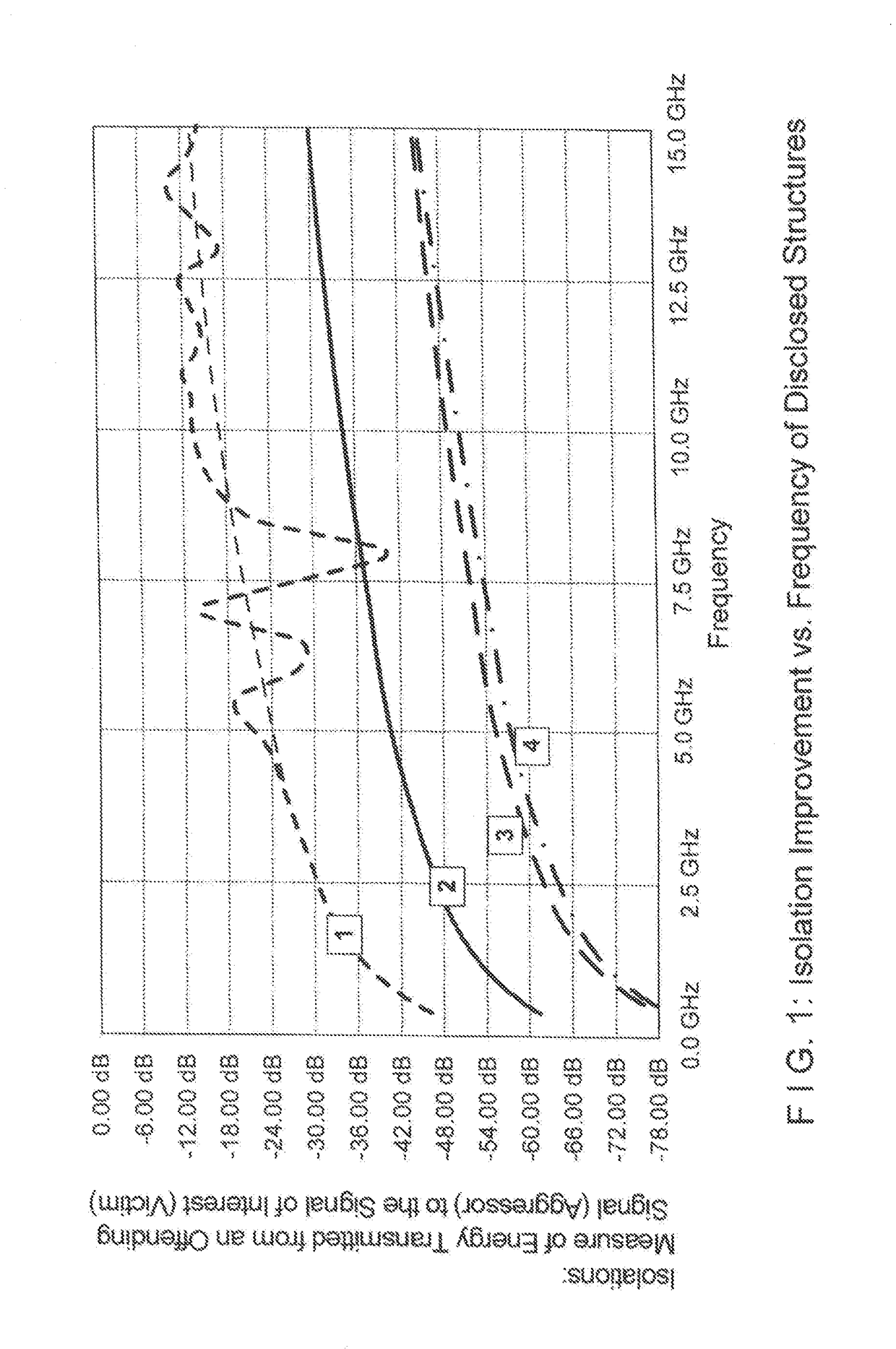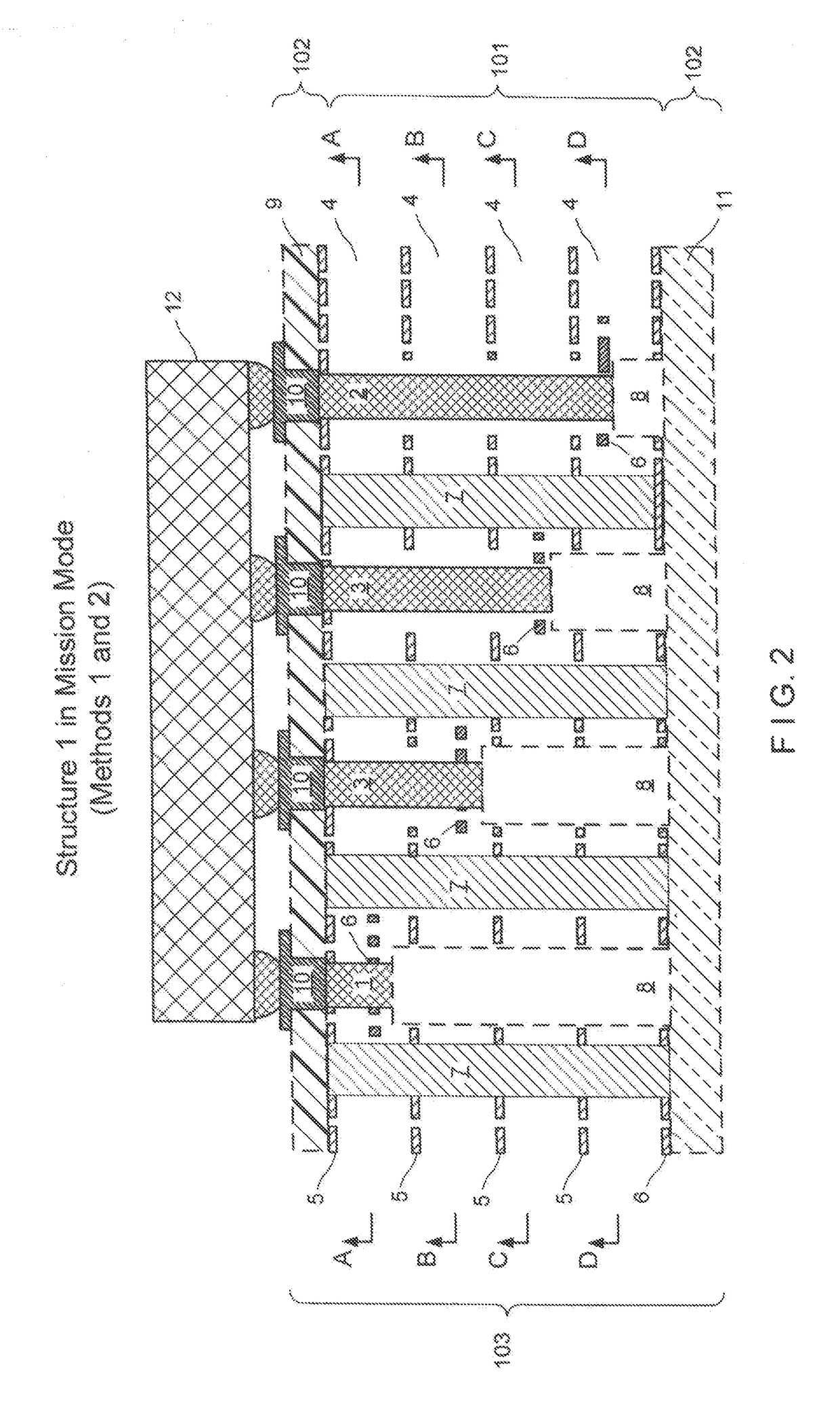Structure for isolating high speed digital signals in a high density grid array
a high-density, grid array technology, applied in the direction of printed circuit manufacturing, printed circuit aspects, semiconductor/solid-state device details, etc., can solve the problem of high manufacturing cost, achieve unique signals, prevent metal layer trace damage, and mitigate cross-coupling of adjacent signals.
- Summary
- Abstract
- Description
- Claims
- Application Information
AI Technical Summary
Benefits of technology
Problems solved by technology
Method used
Image
Examples
Embodiment Construction
[0031]The present invention provides for three methods for isolating high speed digital signals in a high density grid array that utilize any one of a variety of isolation barrier shapes (element number 7) including round hole, c-shape, and straight line wall structures illustrated below respectively as element numbers 7a and 7b and 7c. Each of the isolation barriers 7, 7a, 7b, 7c and 7d can be used in two primary structures for any of the three methods. These two primary structures differ in how the isolation barrier is insulated from the integrated circuit device. The term mission mode in the present application refers to how the present invention operates when the integrated circuit device (IC) is connected.[0032]FIGS. 9-13 describe the first method for structure 1 with a nickel sintering paste mix or nickel plate. The element numbers for this embodiment are:[0033]1. Inner-most Integrated Circuit Device Escape via built into the sub-lamination[0034]2. Outer-most Integrated Circui...
PUM
 Login to View More
Login to View More Abstract
Description
Claims
Application Information
 Login to View More
Login to View More - R&D
- Intellectual Property
- Life Sciences
- Materials
- Tech Scout
- Unparalleled Data Quality
- Higher Quality Content
- 60% Fewer Hallucinations
Browse by: Latest US Patents, China's latest patents, Technical Efficacy Thesaurus, Application Domain, Technology Topic, Popular Technical Reports.
© 2025 PatSnap. All rights reserved.Legal|Privacy policy|Modern Slavery Act Transparency Statement|Sitemap|About US| Contact US: help@patsnap.com



